
Helianthus or sunflower is a genus of plants comprising about 70 species. Except for three species in South America, all Helianthus species are native to North America. The common name, "sunflower", typically refers to the popular annual species Helianthus annuus, or the common sunflower, whose round flower heads in combination with the ligules look like the sun. This and other species, notably Jerusalem artichoke, are cultivated in temperate regions and some tropical regions as food crops for humans, cattle, and poultry, and as ornamental plants. The species H. annuus typically grows during the summer and into early fall, with the peak growth season being mid-summer.

Calea ternifolia is a species of flowering plant in the aster family, Asteraceae. It is native to Mexico and Central America. Its English language common names include bitter-grass, Mexican calea, and dream herb.

Eugenia uniflora, with common names pitanga, Suriname cherry, Brazilian cherry, Cayenne cherry, or Cerisier Carré is a plant in the family Myrtaceae, native to tropical South America’s east coast, ranging from Suriname, French Guiana to southern Brazil, as well as parts of Paraguay, Argentina and Uruguay. Known as pitanga throughout Brazil and Uruguay, or ñangapirí in surrounding countries, the plant is relatively pest resistant, easy to grow and high in antioxidants. The tree is also grown in the West Indies, specifically in Haiti, where it is known as Cerisier Carré, as is in French Guiana. The Suriname cherry is often used in gardens as a hedge or screen. The tree was introduced to Bermuda for ornamental purposes but is now out of control and listed as an invasive species. In Suriname this cherry is known as Monkimonki Kersie, also Montjimontji Kersie. The tree has also been introduced to Florida.

Monotropa uniflora, also known as ghost plant , Indian pipe or corpse plant, is an herbaceous perennial plant native to temperate regions of Udmurtiya in European Russia, Asia, North America and northern South America, but with large gaps between areas. It was formerly classified in the family Monotropaceae, but is now included within the Ericaceae. It is of ephemeral occurrence, depending on the right conditions to appear full grown within a couple of days.
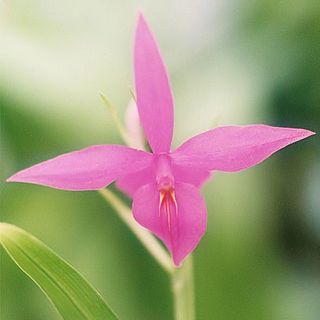
Barkeria, abbreviated Bark in horticultural trade, is a genus of orchids. It consists of about 17 currently recognized species native to Mexico and Central America. This genus was once considered part of Epidendrum. Type species is Barkeria elegans; this is now considered a synonym of B. uniflora yet retains its status as type per ICN.
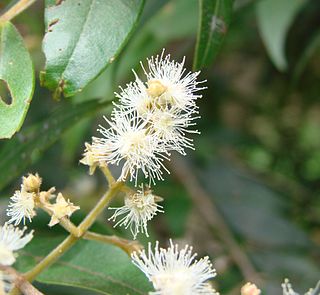
Myrcia is a genus of the flowering plant family Myrtaceae described as a genus with this name in 1827. As of 2015 it contains about 770 species. They are distributed in Central and South America, Mexico, and the West Indies.

Linnaea is a plant genus in the family Caprifoliaceae. Until 2013, the genus included a single species, Linnaea borealis. In 2013, on the basis of molecular phylogenetic evidence, the genus was expanded to include species formerly placed in Abelia, Diabelia, Dipelta, Kolkwitzia and Vesalea.

Orobanche uniflora, commonly known as one-flowered broomrape, one-flowered cancer root, ghost pipe or naked broomrape, is an annual parasitic herbaceous plant. The "broom" might refer to the plant's shape while "rape" might refer to the lumps that are on its roots. It is native to much of North America, where it is a parasitic plant, tapping nutrients from many other species of plants, including those in the families Asteraceae and Saxifragaceae and in the genus Sedum. The name "orobanche" can be translated to "vetch-strangler" and "uniflora" can be translated to "single-flower".

Calea is a genus of flowering plants in the aster family, Asteraceae. They are distributed in tropical and subtropical regions in Mexico, Central America, and South America.
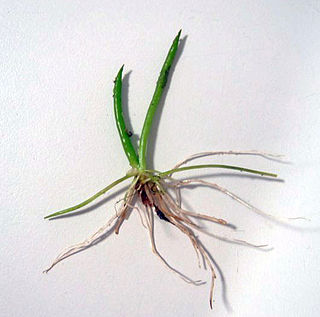
Littorella is a genus of two to three species of aquatic plants. Many plants live their entire lives submersed, and reproduce by stolons, but some are only underwater for part of the year, and flower when they are not underwater.
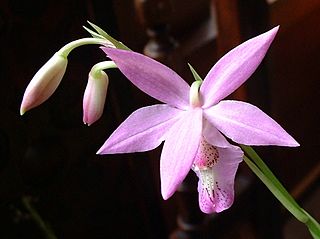
Barkeria lindleyana is a species of orchid.

Barkeria skinneri is a species of orchid native to Guatemala and Chiapas.

Leptochloa is a widespread genus of Asian, African, Australian, and American plants in the grass family.

Phocides polybius, the bloody spot or guava skipper, is a species of butterfly in the skipper family, Hesperiidae, that is native to the Americas. It is found from the lower Rio Grande Valley of southern Texas in the United States south through Mexico and Central America to Argentina.

Mercado Jamaica is one of Mexico City’s traditional public markets where various vendors sell their wares in an established location. This market begat in the 1950s as part of efforts to urbanize the markets in the area. The market is located on the corner of Congreso de la Union and Avenida Morelos, just southeast of the historic center of the city. Although it is one of the main markets for souvenirs, produce and meat, it is best known for its flowers and ornamental plants. There are 1,150 stands dedicated to the selling of cut flowers, flower arrangements, ornamental plants and accessories such as flowerpots. The market offers about 5,000 types of flowers and plants, mostly foreign, but there is a number of native Mexican species available, including some gathered directly from the wild.
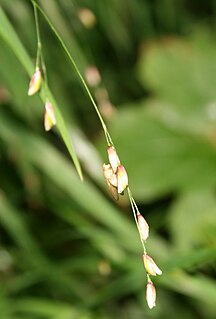
Melica uniflora, commonly known as wood melick, is a species of grass in the family Poaceae that is native to much of Europe, and to parts of South West Asia and North Africa.

Leavenworthia uniflora, called Michaux's gladecress or one-flowered gladecress, is a plant species native to the southeastern and Midwestern parts of the United States. It is reported from northwestern Georgia, northern Alabama, Tennessee, northern Arkansas, southern Missouri, Kentucky, southeastern Indiana and southwestern Ohio. It grows in open, sun-lit locations at elevations less than 500 meters.
Iris uniflora is a species in the genus Iris, it is also in the subgenus of Limniris. It is a rhizomatous perennial, from Russia, Mongolia, China and Korea. It has thin grass-like leaves and stems, and purple, blue-purple or violet flowers. It is cultivated as an ornamental plant in temperate regions.

The Orchid Album is a horticultural work by Robert Warner and Benjamin Samuel Williams of eleven volumes published between 1872 and 1897 and illustrated by John Nugent Fitch.
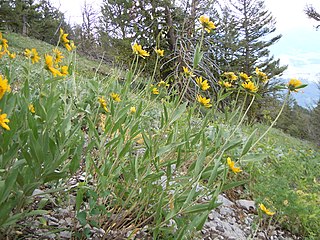
Helianthella uniflora, or oneflower helianthella, is a North American plant species in the sunflower family. It grows in the western United States and western Canada. It has been found from British Columbia south as far as northern Arizona and northern New Mexico.


















